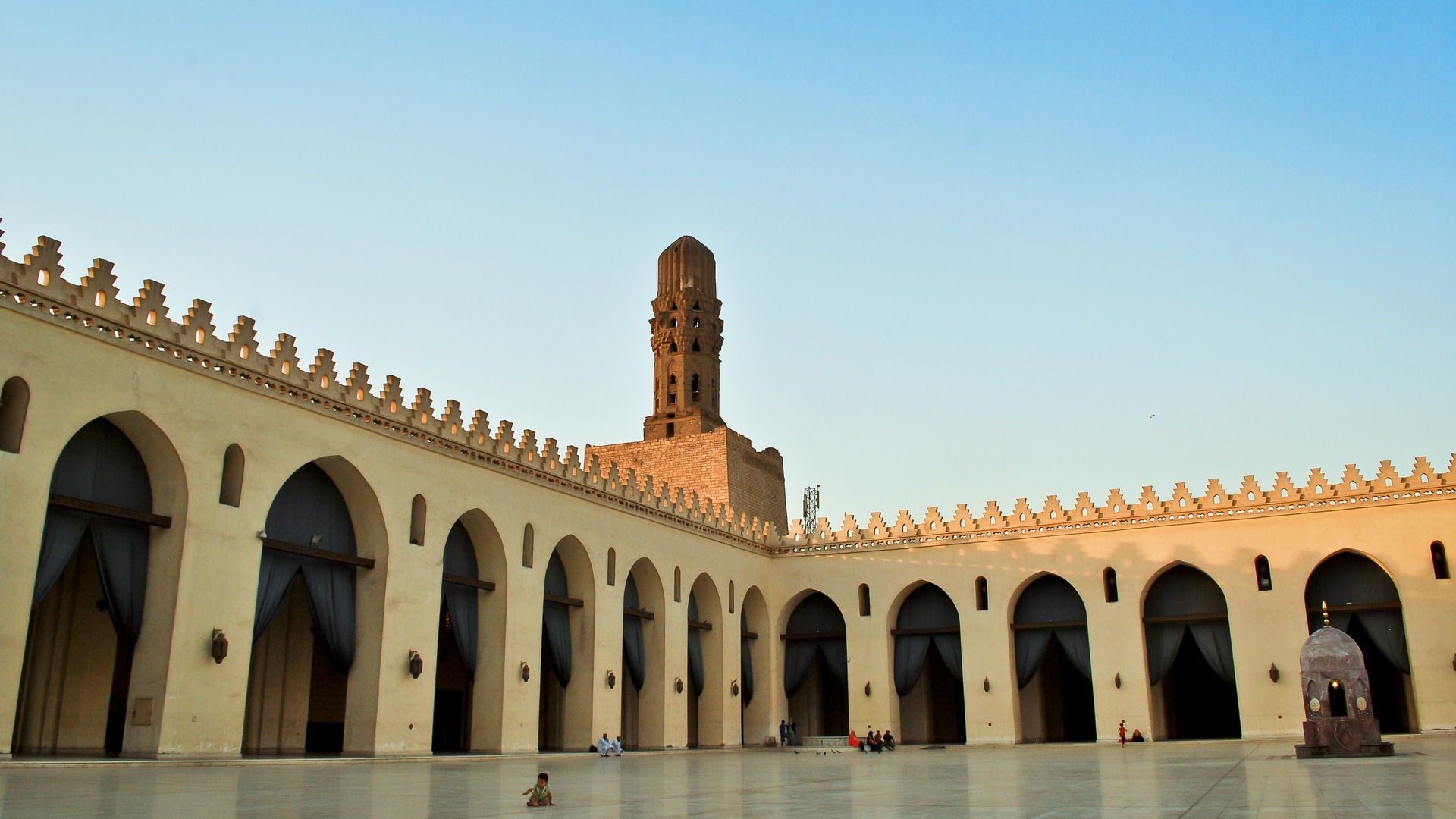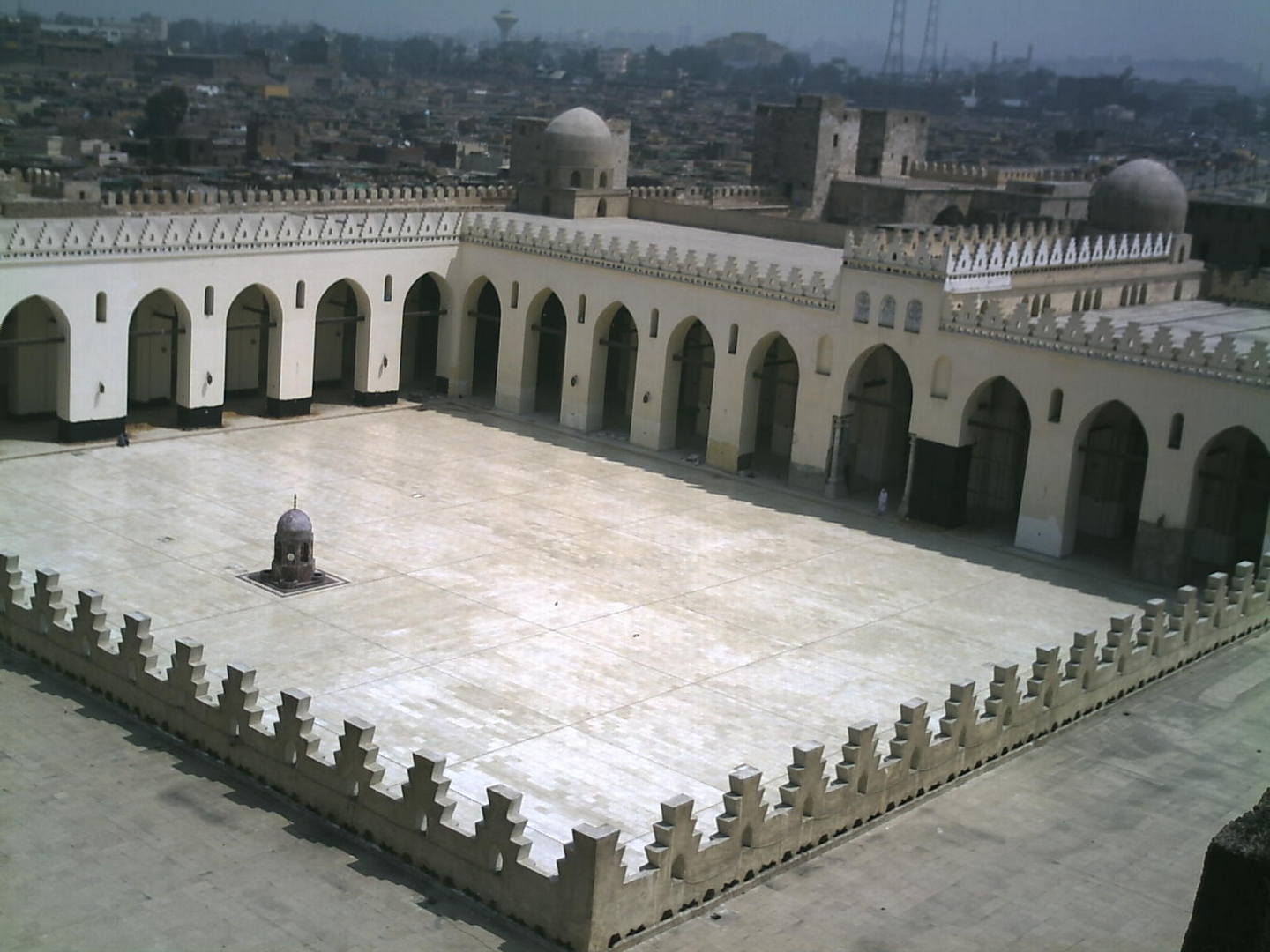Step Back in Time: Exploring Al-Hakim Mosque in Cairo

Overview of Al-Hakim Mosque In Cairo
History of Al-Hakim Mosque
You are standing in front of the majestic Al-Hakim Mosque in Cairo. It was commissioned by the Fatimid Caliph Al-Hakim in 990 AD. The mosque has a rich history, having been damaged and rebuilt multiple times over the centuries. It served not only as a place of worship but also as a centre of learning and culture in Medieval Cairo.
Architectural Features of Al-Hakim Mosque
The Al-Hakim Mosque showcases a unique blend of Fatimid, Mamluk, and Ottoman architectural styles. Its exterior is characterized by intricate geometric patterns and ornate calligraphy, typical of Islamic art.
As you enter the mosque, you are greeted by a spacious courtyard surrounded by elegant marble columns and arched passageways. The main prayer hall features a stunning mihrab (prayer niche) adorned with colourful mosaics.
Comparison of Al-Hakim Mosque Features:
| Aspect | Description |
|---|---|
| History | Built in 990 AD by the Fatimid Caliph Al-Hakim |
| Architectural Styles | Blend of Fatimid, Mamluk, and Ottoman |
| Exterior Design | Intricate geometric patterns and ornate calligraphy |
| Interior Design | Spacious courtyard, marble columns, arched passageways, colourful mosaics in the mihrab |
The Al-Hakim Mosque stands as a testament to the rich architectural and cultural heritage of Cairo. Its historical significance and stunning design continue to attract visitors from around the world.

Location and Importance
Geographical Location of Al-Hakim Mosque
You stand before the impressive Al-Hakim Mosque in Cairo, a historic site in the heart of the city's Islamic quarter. Situated in Al Moez Street, the mosque is surrounded by other significant landmarks, making it a focal point for tourists and locals alike.
Cultural and Religious Significance
The Al-Hakim Mosque holds great cultural and religious importance in Cairo. Commissioned by the Fatimid Caliph Al-Hakim in 990 AD, the mosque served as a place of worship and a hub for intellectual and cultural activities in Medieval Cairo. Over the centuries, the mosque has endured periods of damage and restoration, standing as a testament to the city's architectural heritage.
The Al-Hakim Mosque remains a symbol of Cairo's rich history and architectural beauty, drawing visitors from across the globe to marvel at its exquisite design and cultural significance.
Architecture and Design
Arabesque Designs and Calligraphy
You will notice the intricate arabesque designs and ornate calligraphy adorning the exterior of the Al-Hakim Mosque. These artistic elements reflect the blend of Fatimid, Mamluk, and Ottoman architectural styles, showcasing the mosque's cultural diversity and historical significance.
Unique Features of the Minarets
The Al-Hakim Mosque's minarets stand out with their unique design and historical importance. Dating back to the 11th century, they display a blend of architectural influences and symbolize the evolution of Islamic art and design in Cairo.

Al-Hakim Mosque Interior
Decorative Elements Inside the Mosque
In the interior of the Al-Hakim Mosque, you'll be struck by the intricate decorative elements that adorn the prayer halls and courtyards. The use of vibrant colours, geometric patterns, and detailed calligraphy creates a visually stunning atmosphere that reflects the rich artistic history of Islamic architecture in Cairo.
Prayer Halls and Courtyards
As you walk through the prayer halls and courtyards of the Al-Hakim Mosque, you'll appreciate the spacious layout that allows for natural light to filter in, illuminating the marble columns and colourful mosaics in the mihrab.
The arched passageways lead you through a journey of architectural beauty and cultural significance, providing a serene space for prayer and contemplation within the bustling city of Cairo.
Al-Hakim Mosque Courtyard
Islamic Architecture in the Courtyard
As you stand in the Al-Hakim Mosque courtyard, you will be surrounded by a blend of Islamic architectural elements that showcase the intricate beauty and symmetry typical of mosques in Cairo. The carefully designed archways and domes create a harmonious space that invites contemplation and reflection.
Fountains and Floral Designs
The courtyard of the Al-Hakim Mosque features elegant fountains adorned with colourful floral designs that add a touch of tranquillity to the bustling surroundings. The gentle sound of flowing water and the lush greenery provide a peaceful ambience for visitors to pause and appreciate the beauty of the mosque's outdoor space.

Restoration and Preservation Efforts
Conservation Projects at Al-Hakim Mosque
You may be interested in the fact that the Al-Hakim Mosque has undergone various conservation projects over the years to preserve its rich architectural heritage. Conservation experts have meticulously restored the intricate archways and domes, ensuring that the mosque's original beauty is maintained for future generations to appreciate.
The fountains and floral designs in the courtyard have also been carefully preserved to retain their tranquil appeal, offering visitors a glimpse into the historical significance of this sacred site.
Challenges in Maintaining the Historical Site
Despite efforts to preserve the Al-Hakim Mosque, challenges in maintaining this historical site persist. The harsh climate of Cairo, with its desert heat and occasional sandstorms, poses a threat to the mosque's delicate architectural details.
Additionally, the constant influx of visitors and the wear and tear of regular use require continuous monitoring and maintenance to ensure the site's longevity. Preservationists are continually seeking innovative solutions to protect the Al-Hakim Mosque and its courtyard from environmental damage and the effects of time.
.
Visitors' Experience
Guided Tours and Visiting Hours
Visitors to the Al-Hakim Mosque can enhance their experience by participating in guided tours that offer insight into the rich history and architectural significance of this sacred site. Knowledgeable guides lead visitors through the intricately restored archways and domes, providing a deeper understanding of the conservation efforts that have preserved the mosque's beauty over the years.
The mosque is open to visitors during specific visiting hours, allowing ample time to explore the courtyard, admire the fountains, and immerse oneself in the serene atmosphere of this historical gem.
Reviews and Testimonials
Visitors to the Al-Hakim Mosque have expressed awe and admiration for the meticulous restoration and preservation efforts that have safeguarded its cultural heritage. Many have lauded the conservation projects that have maintained the mosque's architectural integrity, highlighting the beauty of the intricate details and the tranquil ambience of the courtyard.
Reviews often commend the guides for their informative tours, which offer a deeper appreciation of the historical and religious significance of the site. Testimonials from visitors emphasize the importance of ongoing maintenance and innovative preservation strategies to ensure that the Al-Hakim Mosque continues to captivate and inspire future generations.

Historical Significance
Connection to the Fatimid Dynasty
The Al-Hakim Mosque is a significant landmark in your exploration of the Fatimid Dynasty's heritage. Its architectural splendour and intricate details serve as a testament to the rich history and cultural legacy of this period.
By visiting this historical site, you can immerse yourself in the architectural styles and religious influences that defined the era of the Fatimid rule in Egypt.
Role in Islamic History
When you step into the Al-Hakim Mosque, you are stepping into a chapter of Islamic history that has stood the test of time. The mosque's role as a place of worship and cultural significance is palpable as you wander through its corridors and courtyards.
The architectural marvels and spiritual aura of the mosque offer a glimpse into the profound impact of Islamic traditions and beliefs on the art and architecture of the region.
